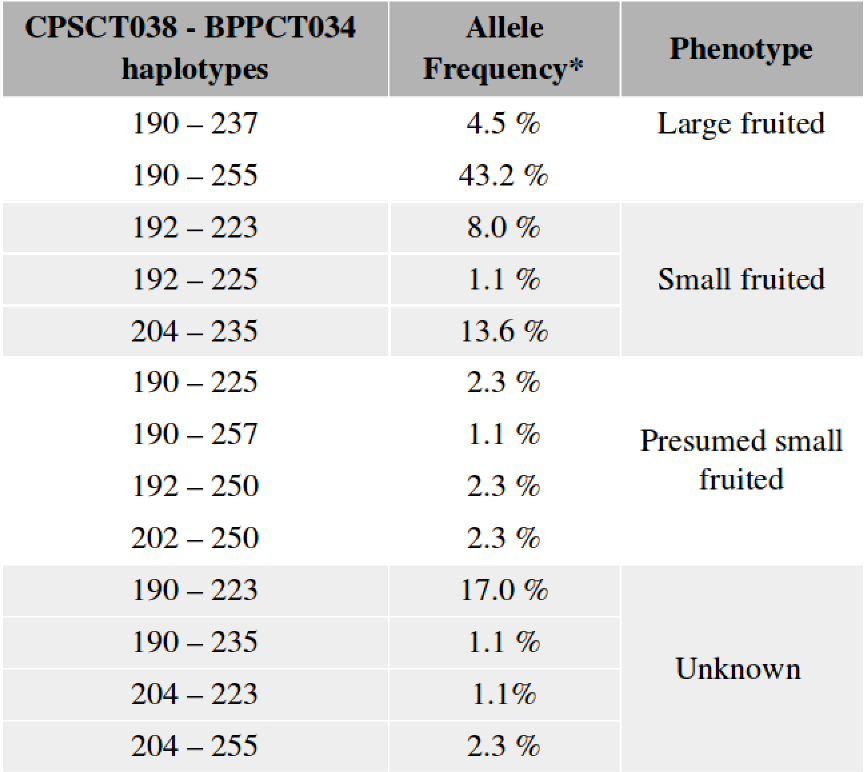Sweet Cherry Fruit Size
Size matters: fruit size is one of the major differences between modern sweet cherry and its wild ancestors. Large fruits are preferred by consumers and processors alike, commanding a highly desirable price premium for growers. The components of fruit size include its weight, dimensions, size of the pit and at the cellular level, the total number of plant cells present in the mesocarp.
Genetics
Fruit size is a quantitative trait whose phenotype can be predicted from a single major QTL located on chromosome 2 of cherry. This increase in fruit size is likely due to an increase in cell number a trait that is correlated with other fruit size components: fruit weight, fruit diameter and fruit length. Fruit size is highly heritable in cherry – heritabilities as high as 0.94 and 0.76 have been reported for mesocarp cell number and fruit weight, respectively. The data on cherry fruit size suggests that small-fruited alleles are semi-dominant.
Allelic Variation

*Allele frequency among important North American sweet cherry germplasm.
Predictive Capacity
This QTL can explain 26 – 40% of the phenotypic variance for fruit diameter and 19 – 21% of the phenotypic variation for fruit length. It is identified by two SSRs that flank the QTL, CPSCT038 and BPPCT034, and are located 10 to 20 cM apart, depending on the germplasm. The DNA tests for this trait assay for an SSR (simple sequence repeat,) a repeating motif whose variation in length is used for differentiating between alleles. Since this is a two-marker test, several haplotypes have been identified that are predictive of small-fruited or large-fruited phenotypes.
For further discussion on using this test in a breeding program, please see the Community Breeders November 2011 article on this topic.
